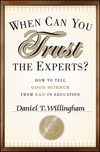“Don’t look for the big, quick improvement. Seek the small improvement one day at a time. That’s the only way it happens—and when it happens, it lasts.” John Wooden
Years ago, my kids and my wife got into the beanie baby craze. These were small teddy bears that came in hundreds of varieties. Each cost only a few dollars, so from my point of view it was a great gift. The problem is that they were so cheap that my wife thought nothing of buying one—no single purchase was painful. But over the months the purchases continued; by the time I started looking into it, we figured out that they had spent over $800 in teddy bears!
The beanie baby incident was a reminder of how small things can add up very quickly, and great transformations can happen through tiny changes patiently accumulated. That’s the central idea behind kaizen, the strategy of continuous improvement that is one of the core principles of lean thinking. It works as well in personal productivity as it does on the factory floor.
Kaizen works mathematically not only because things add up, but because of the magic of compounding. A small percentage improvement continuously applied over time means that each successive improvement is larger than the last, and that can make a huge difference over time.
But kaizen also works because of the psychological mechanism. While we’re often exhorted to set big goals for ourselves, the size of the goals can sometimes be self-defeating. Big goals can stress us out; they engage our mind’s self-defense mechanism and engender fear. How many times have you set yourself a big goal—say, a new year’s resolution—and had it fail? Kaizen can help melt resistance.
Besides improving ongoing efforts, kaizen can help you get started on things that you’ve been putting off. One reason we procrastinate on large goals is that their very difficulty can generate fear. We know it will take a large effort, so we put it off until we think we can be in a position to succeed. But often that time never comes. It’s better to take some small steps today that move us a tiny bit closer, than never to take the big steps that will get us a lot closer. There’s a wonderful quote from a mindfulness coach in One Small Step Can Change Your Life: The Kaizen Way, by Robert Maurer: “I’d rather they go home and meditate for one minute than not meditate for thirty minutes.”
Kaizen isn’t just a practice—it’s also a mindset. It’s having the attitude that your performance is not limited by fixed abilities and traits but rather is under your control. It’s about creative dissatisfaction: knowing that it is always possible to improve a process. Finally, it’s about being mindful of what you’re doing and why that opens your eyes to improvement possibilities.
Here are some small steps you can begin taking now to start implementing kaizen:
Choose an area to apply it. Kaizen can be applied to specific areas of your personal life and work, such as fitness, relationships, or learning a particular topic. It may also be applied to the way you work, such as implementing some of the ideas in this series. For example, you can make small improvements in the length of dedicated focused time you spend on a project. 5S is also a great area for applying kaizen. Although it’s a great idea to start with a blitz to begin sorting, setting in order, etc., you may not be able to get to it all at once. So, take a little time each day or each week to chip away at some areas.
Every day a little up. The header of this paragraph is a nice little phrase from The Remedy: Bringing Lean Thinking Out of the Factory to Transform the Entire Organization by Pascal Dennis. The key word in continuous improvement is continuous. You can’t develop habits in quick bursts—they must come from the patient accumulation of actions and small successes. But those small successes can become large over time. Continuous means that kaizen is not something separate from your daily work that you do once in a while when you have time or you think of it, but it becomes a part of your work. You become mindful of what you are doing and how you are doing it and improvement opportunities are more likely to become visible. That’s why it’s a good idea to have a journal or other consistent place where you can record ideas as they occur to you. You can also build in time during your morning plan or your evening’s review to remind yourself.
Set your goals lower. If you don’t have the time right now for the big goal, break it down into smaller parts and choose those.
Big changes can be OK, too. Although so far the focus has been on small changes, there is definitely nothing wrong with big breakthrough or radical transformations if you happen to think of them and have the motivation to pursue them. In fact, you can combine the two approaches. Just as companies will have dedicated kaizen events, in which they will bring together people for three days to brainstorm improvement ideas, you may occasionally pick an area you would like to improve and then take some time to think about the processes and jot down ideas.
Copy and improve. A friend of mine likes to brag that he uses the CASE method: “Copy and steal extensively.” No one has a corner on good ideas, and we can always learn from what others are doing. But blind copying isn’t enough; what worked for them might work differently in our own situation, so we should try to improve their practices and ideas. The Japanese have a word for it: yokoten.
Just remember, even though perfection may be impossible, perfecting is something you can do every day.






